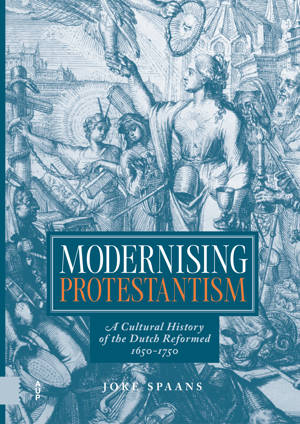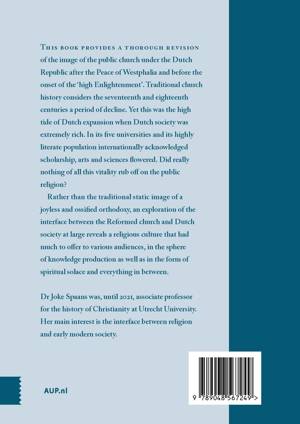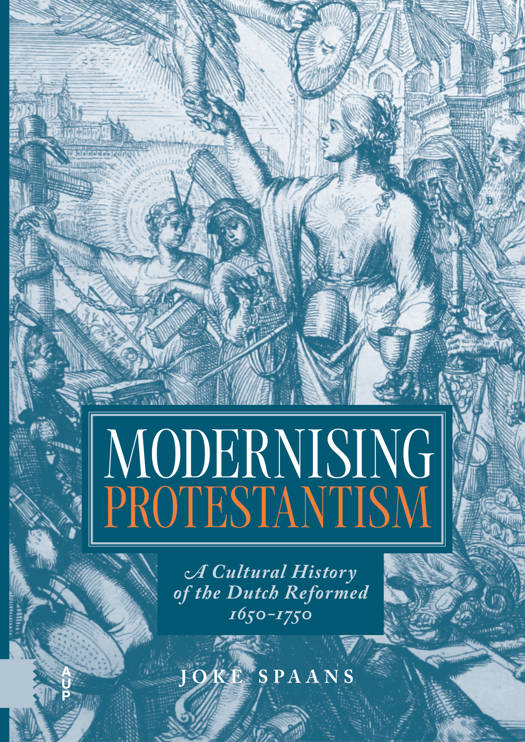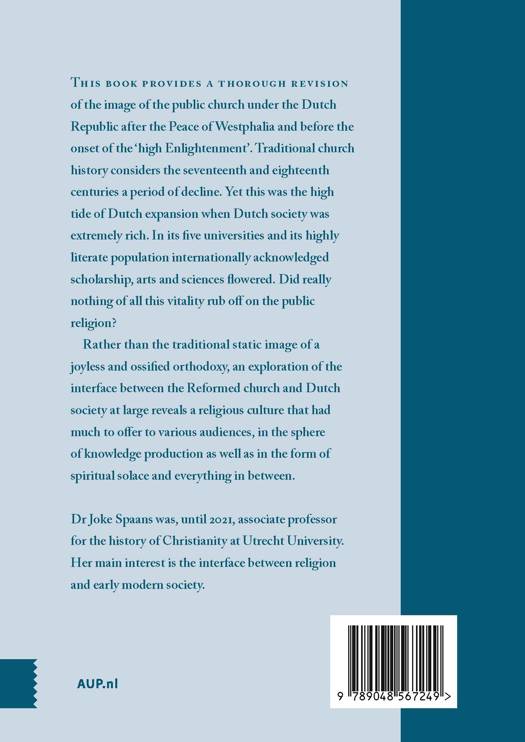
- Afhalen na 1 uur in een winkel met voorraad
- Gratis thuislevering in België vanaf € 30
- Ruim aanbod met 7 miljoen producten
- Afhalen na 1 uur in een winkel met voorraad
- Gratis thuislevering in België vanaf € 30
- Ruim aanbod met 7 miljoen producten
Zoeken


Modernising Protestantism
A Cultural History of the Dutch Reformed, 1650-1750
Joke Spaans
Hardcover | Engels
€ 231,00
+ 462 punten
Omschrijving
This book provides a thorough revision of the image of the public church under the Dutch Republic after the Peace of Westphalia and before the onset of the 'high Enlightenment'. Traditional church history considers the seventeenth and eighteenth centuries a period of decline. Yet this was the high tide of Dutch expansion when Dutch society was extremely rich. In its five universities and its highly literate population internationally acknowledged scholarship, arts and sciences flowered. Did really nothing of all this vitality rub off on the public religion?
Rather than the traditional static image of a rather joyless and ossified orthodoxy, an exploration of the interface between the Reformed church and Dutch society at large reveals a religious culture that had much to offer to various audiences, in the sphere of knowledge production as well as in the form of spiritual solace and everything in between.
Rather than the traditional static image of a rather joyless and ossified orthodoxy, an exploration of the interface between the Reformed church and Dutch society at large reveals a religious culture that had much to offer to various audiences, in the sphere of knowledge production as well as in the form of spiritual solace and everything in between.
Specificaties
Betrokkenen
- Auteur(s):
- Uitgeverij:
Inhoud
- Aantal bladzijden:
- 746
- Taal:
- Engels
Eigenschappen
- Productcode (EAN):
- 9789048567249
- Verschijningsdatum:
- 17/04/2025
- Uitvoering:
- Hardcover
- Formaat:
- Genaaid
- Afmetingen:
- 171 mm x 241 mm
- Gewicht:
- 1423 g

Alleen bij Standaard Boekhandel
+ 462 punten op je klantenkaart van Standaard Boekhandel
Beoordelingen
We publiceren alleen reviews die voldoen aan de voorwaarden voor reviews. Bekijk onze voorwaarden voor reviews.












